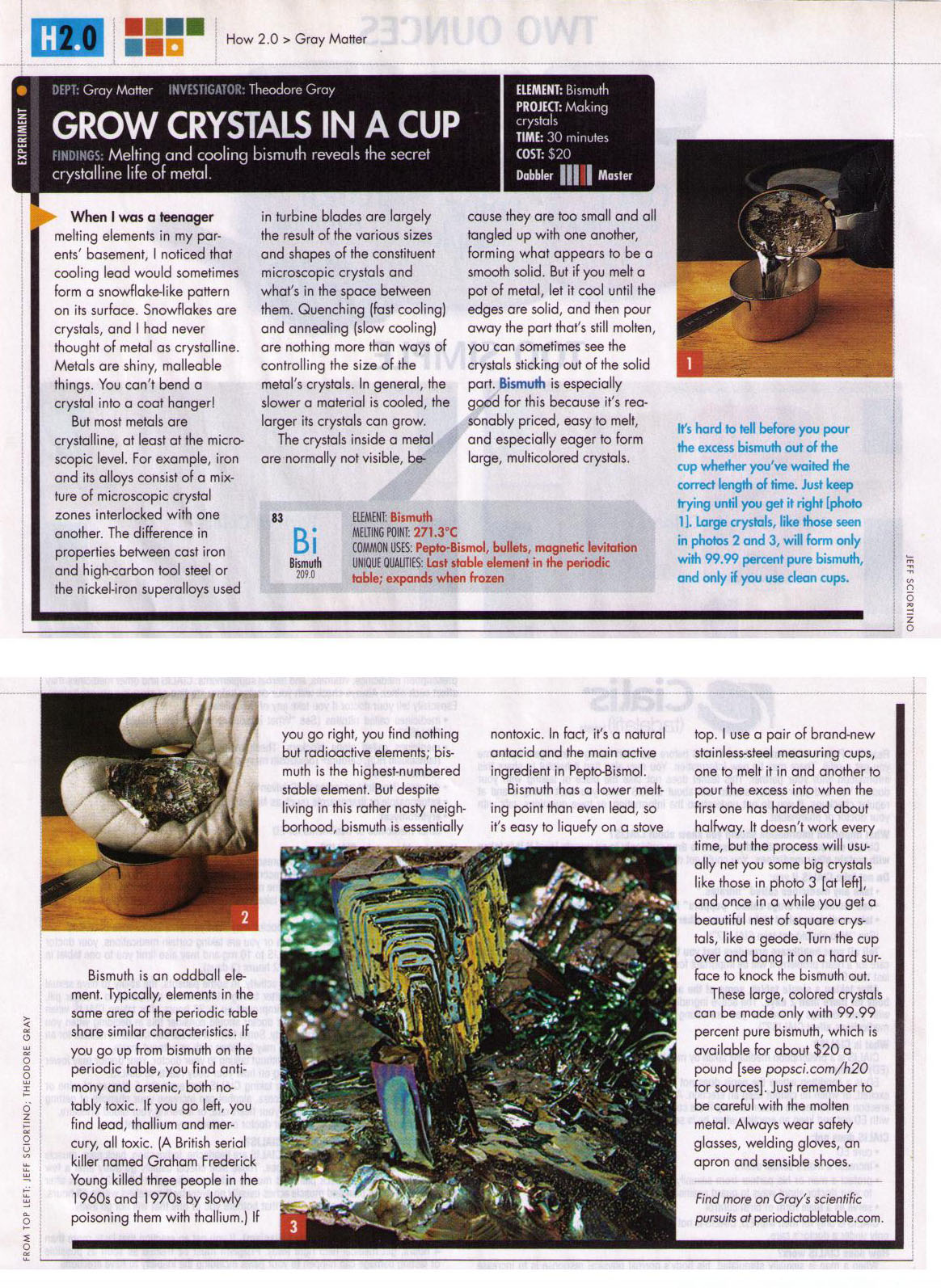When I was a teenager melting elements in my parents' basement, I noticed that cooling lead would sometimes form a snowflake-like pattern on its surface. Snowflakes are crystals, and I had never thought of metal as crystalline. Metals are shiny, malleable things. You can't bend a crystal into a coat hanger!
But most metals are crystalline, at least at the microscopic level. For example, iron and its alloys consist of a mixture of microscopic crystal zones interlocked with one another. The difference in properties between cast iron and high-carbon tool steel or the nickel-iron superalloys used in turbine blades are largely the result of the various sizes and shapes of the constituent microscopic crystals and what's in the space between them. Quenching (fast cooling) and annealing (slow cooling) are nothing more than ways of controlling the size of the metal's crystals. In general, the slower a material is cooled, the larger its crystals can grow.
The crystals inside a metal are normally not visible, because they are too small and all tangled up with one another, forming what appears to be a smooth solid. But if you melt a pot of metal, let it cool until the edges are solid, and then pour away the part that's still molten, you can sometimes see the crystals sticking out of the solid part. Bismuth is especially good for this because it's reasonably priced, easy to melt, and especially eager to form large, multicolored crystals.
Bismuth is an oddball element. Typically, elements in the same area of the periodic table share similar characteristics. If you go up from bismuth on the periodic table, you find antimony and arsenic, both notably toxic. If you go left, you find lead, thallium and mercury, all toxic. (A British serial killer named Graham Frederick Young killed three people in the 1960s and 1970s by slowly poisoning them with thallium.) If you go right, you find nothing but radioactive elements; bismuth is the highest-numbered stable element. But despite living in this rather nasty neighborhood, bismuth is essentially nontoxic. In fact, it's a natural antacid and the main active ingredient in Pepto-Bismol. Bismuth has a lower melting point than even lead, so it's easy to liquefy on a stove top. I use a pair of brand-new stainless-steel measuring cups, one to melt it in and another to pour the excess into when the first one has hardened about halfway. It doesn't work every time, but the process will usually net you some big crystals like those in photo 3 [above], and once in a while you get a beautiful nest of square crystals, like a geode. Turn the cup over and bang it on a hard surface to knock the bismuth out.
These large, colored crystals can be made only with 99.99 percent pure bismuth, which is available for about $20 a pound [click here for sources]. Just remember to be careful with the molten metal. Always wear safety glasses, welding gloves, an apron and sensible shoes. |
|

